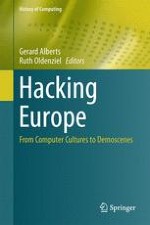2014 | OriginalPaper | Buchkapitel
9. How Amsterdam Invented the Internet: European Networks of Significance, 1980–1995
verfasst von : Caroline Nevejan, Alexander Badenoch
Erschienen in: Hacking Europe
Verlag: Springer London
Aktivieren Sie unsere intelligente Suche, um passende Fachinhalte oder Patente zu finden.
Wählen Sie Textabschnitte aus um mit Künstlicher Intelligenz passenden Patente zu finden. powered by
Markieren Sie Textabschnitte, um KI-gestützt weitere passende Inhalte zu finden. powered by
